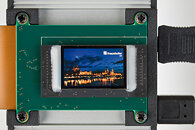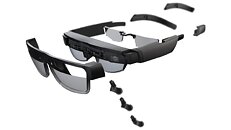HaptX Introduces Industry's Most Advanced Haptic Gloves, Priced for Scalable Deployment
HaptX Inc., the leading provider of realistic haptic technology, today announced the availability of pre-orders of the company's new HaptX Gloves G1, a ground-breaking haptic device optimized for the enterprise metaverse. HaptX has engineered HaptX Gloves G1 with the features most requested by HaptX customers, including improved ergonomics, multiple glove sizes, wireless mobility, new and improved haptic functionality, and multiplayer collaboration, all priced as low as $4,500 per pair - a fraction of the cost of the award-winning HaptX Gloves DK2.
"With HaptX Gloves G1, we're making it possible for all organizations to leverage our lifelike haptics," said Jake Rubin, Founder and CEO of HaptX. "Touch is the cornerstone of the next generation of human-machine interface technologies, and the opportunities are endless." HaptX Gloves G1 leverages advances in materials science and the latest manufacturing techniques to deliver the first haptic gloves that fit like a conventional glove. The Gloves' digits, palm, and wrist are soft and flexible for uninhibited dexterity and comfort. Available in four sizes (Small, Medium, Large, and Extra Large), these Gloves offer the best fit and performance for all adult hands. Inside the Gloves are hundreds of microfluidic actuators that physically displace your skin, so when you touch and interact with virtual objects, the objects feel real.
"With HaptX Gloves G1, we're making it possible for all organizations to leverage our lifelike haptics," said Jake Rubin, Founder and CEO of HaptX. "Touch is the cornerstone of the next generation of human-machine interface technologies, and the opportunities are endless." HaptX Gloves G1 leverages advances in materials science and the latest manufacturing techniques to deliver the first haptic gloves that fit like a conventional glove. The Gloves' digits, palm, and wrist are soft and flexible for uninhibited dexterity and comfort. Available in four sizes (Small, Medium, Large, and Extra Large), these Gloves offer the best fit and performance for all adult hands. Inside the Gloves are hundreds of microfluidic actuators that physically displace your skin, so when you touch and interact with virtual objects, the objects feel real.
















































